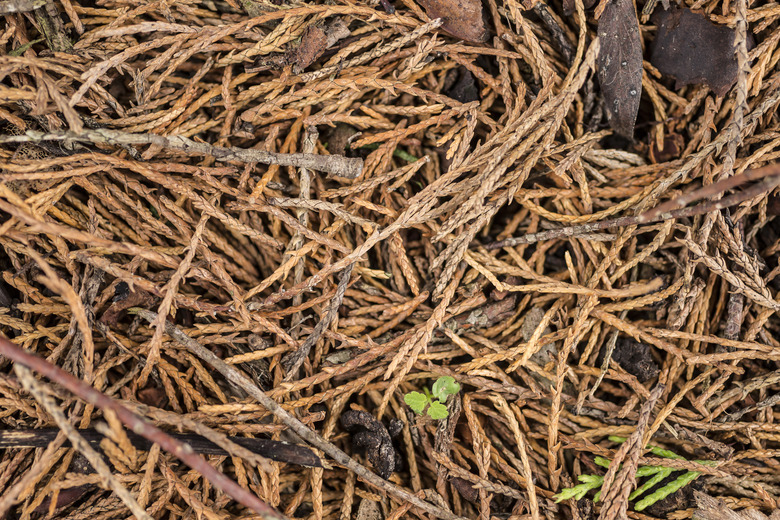Is There An Outdoor Vacuum For Pine Needles?
We may receive a commission on purchases made from links.
Pine needles can be quite a nuisance for homeowners, likely leading to thoughts of whether there is an outdoor vacuum for pine needles. These needles are dry and contain resins, which means they are slow to decompose compared to broadleaf tree leaves. What's more, a thick layer of pine needles that builds up over time prevents growth such as grass, flowers or shrubs. An outdoor vacuum may be a solution.
Tip
There are outdoor vacuums that can be used on pine needles, including those designed for leaves.
Leaf Vacuum Options
Leaf Vacuum
Options
Being slim and smooth, pine needles can be hard to rake, and sweeping your lawn is tedious and inefficient. As such, many people turn to solutions such as leaf blowers and yard vacuums. If you're dealing with several years' worth of accumulated pine needles, they are probably compacted and not as easy to vacuum or blow as broadleaf foliage is. You may need to loosen them with a garden rake before vacuuming or blowing them.
Leaf vacuums and blowers come in a variety of designs, from low-powered, cordless electric options, which are best for clearing light levels of leaves and dirt from driveways and sidewalks, to high-powered, gas-driven, walk-behind designs, which are better for clearing large areas and dense leaf piles. Consider the terrain you will be clearing as well as your physical limitations when selecting a leaf vacuum.
Pine Needle Removal Options
Pine Needle Removal Options
If you have a riding mower to trim your lawn, using an attachment that tows behind your mower and collects leaves, needles and clippings is helpful. Powered and mechanical options are available, depending on your needs and limitations.
For hilly terrain, a handheld leaf blower with a shoulder strap and mulch bag would allow more mobility, though if you are not up to carrying an increasingly heavy bag, there are self-propelled debris vacuums on the market. If you have flat terrain without too large of a lot, a push lawn sweeper will collect surface-level pine needles, but unpowered versions will have trouble with larger debris, such as pine cones or pine needles that have worked themselves deeper into the grass. This last option is best applied after mowing has been completed and larger items have been removed.
In the end, you should always review your options and consider your needs carefully before making a purchase. Most suburban homes with an acre or less of lawn will not need a riding mower much less a tow-behind, gas-powered leaf vacuum. If you are dealing with close trees on an incline, the push lawn sweeper will be difficult to manage.
Safety Concerns and Best Practices
Safety
Concerns and Best Practices
High-powered leaf vacuums can get very loud, especially those that are powered by gas engines. As such, earplugs or sound-canceling earmuffs are necessary to protect your ears and prevent hearing loss.
Walk-behind lawn sweepers stir up a lot of dirt, dust and allergens as well as mold, whether they are powered and self-contained or attachments to lawn mowers. Wearing eye protection in the form of sunglasses or safety glasses is smart to prevent eye irritation, and a dust mask similar to those worn during woodworking will prevent lung and nasal irritation.
If you are using a corded device, be aware of the cord's location at all times to avoid tripping over it. If you are using a push or powered sweeper, it is important to know where the cord is so you do not accidentally run over it and damage the cord. If you are using a low-power or lightweight vacuum, you may want to walk the area beforehand and manually remove larger debris, such as branches, larger pine cones and small rocks, especially if your device uses a mulching or shredding mechanism.
